Acanthobrahmaea
Sauter, 1967
Acanthobrahmaea europaea male

Acanthobrahmaea europaea male
This species was described by Federico Hartig in 1963. Hartig was greatly interested in entomology and collected in southern Italy, especially in the Gennargentu, on the Aspromonte, and the Vulture.
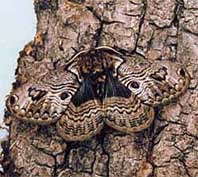 |
It was on Mount Vulture that Hartig encountered Acanthobrahmaea europaea.Hartig, well acquainted with African and Asian Brahmaeidae, recognized it as belonging to that family due to its striking wing patterns, which afford excellent camouflage for a moth resting on tree bark. Image courtesy of Martin Jagelka. |
This species probably feeds on Flame Ash (Fraxinus oxicarpa) in the wild.In captivity (to the right), it has been successfully reared on Privet (Ligustrum). Larvae are colourful and are adorned with thoracic spikes and an anal horn. |
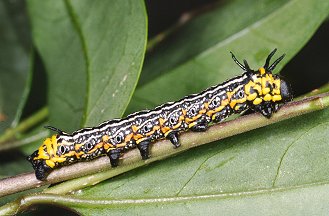 |
Adults are on the wing in April, apparently as a single brood.Mature larvae descend hostplants in early summer to pupate underground. The pupae, which have sharp, projecting abdominal ridges on segments below the wing casings, can be stored at temperatures between 0 and 6 Celsius during the winter. |
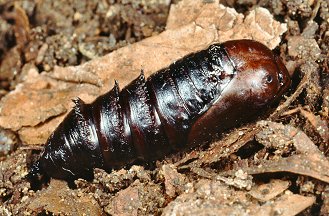 |
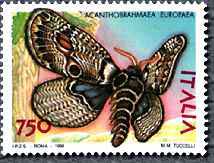 |
Sufficiently beautiful, rare and striking, Acanthobrahmaea europaea is celebrated on an Italian postage stamp.Apparently this species is found only in Italy. |
The male (bottom picture) is slightly darker and has slightly wider antennae than the female (top picture).
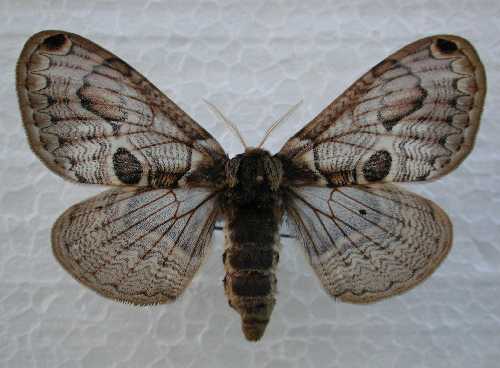

This species is reported as being easy to rear in captivity. It likes warmth.
Return to Main Brahmaeidae Index